Crow’s Nest: Looking forward to summer
By Daniel Barringer, Preserve Manager.
About this time of year I start thinking about cabin fever and want to post photos of the bounty of colorful flowers we have here in the hot months. It hasn’t been a difficult winter (at least, not yet—there’s plenty to come!) but I’m already missing the color of other seasons. Instead of flowers this year I thought I’d highlight a bunch of colorful native fruit that we also enjoy.
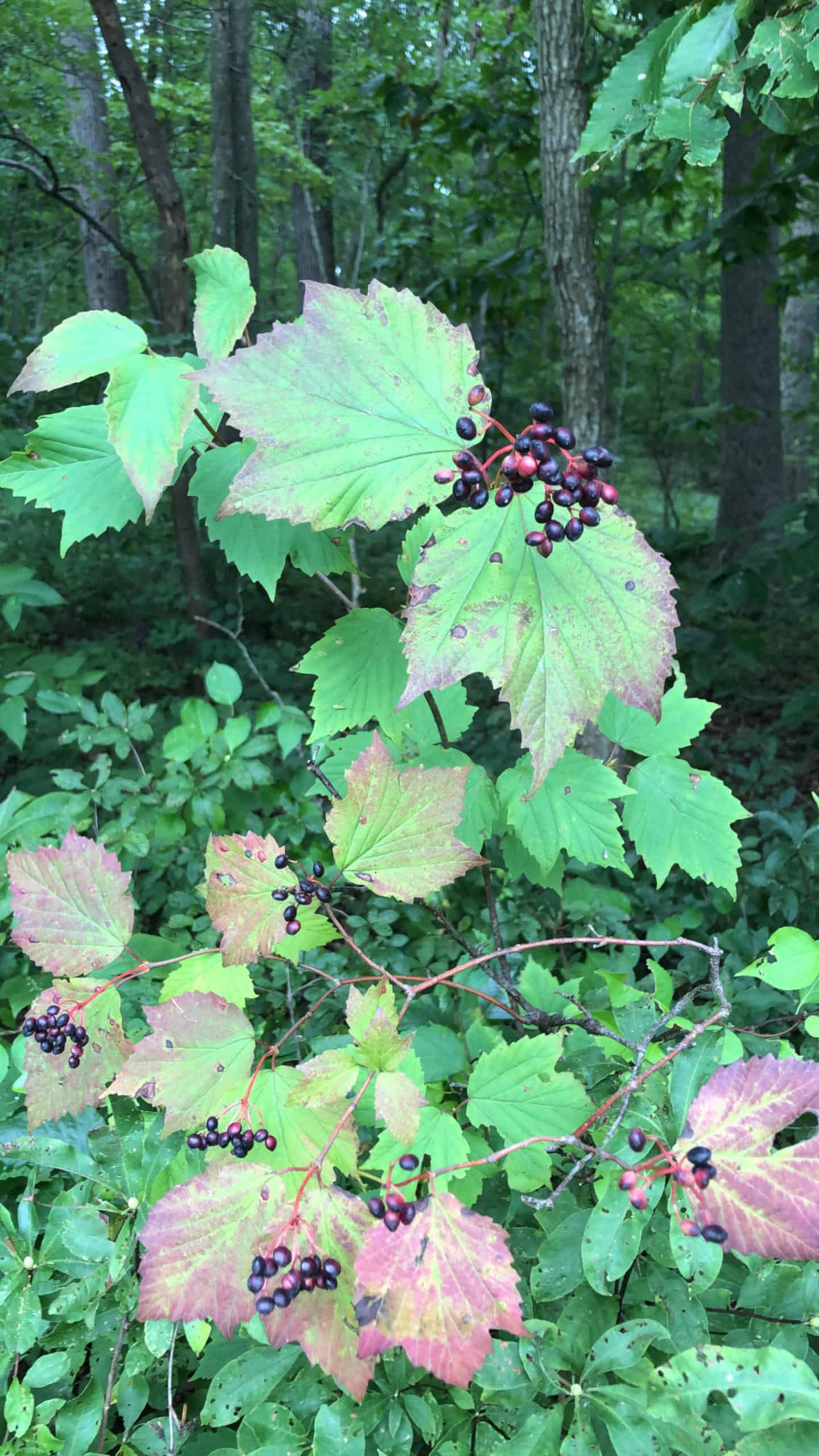
Photo: Daniel Barringer
Above, the red and blue fruit of maple-leaf viburnum (Viburnum acerfolium) splay over the cool green leaves, a highlight in otherwise dark woods. Below, the blue fruit of the native vine Virginia creeper (Parthenocissus quinquifolia) are set off by their bright red peduncles (stalk that bears the fruit) and the first hint of orange to burgundy fall color on the leaves. We don’t mind that by late summer the leaves are starting to look chewed up—that’s all part of the web of life.
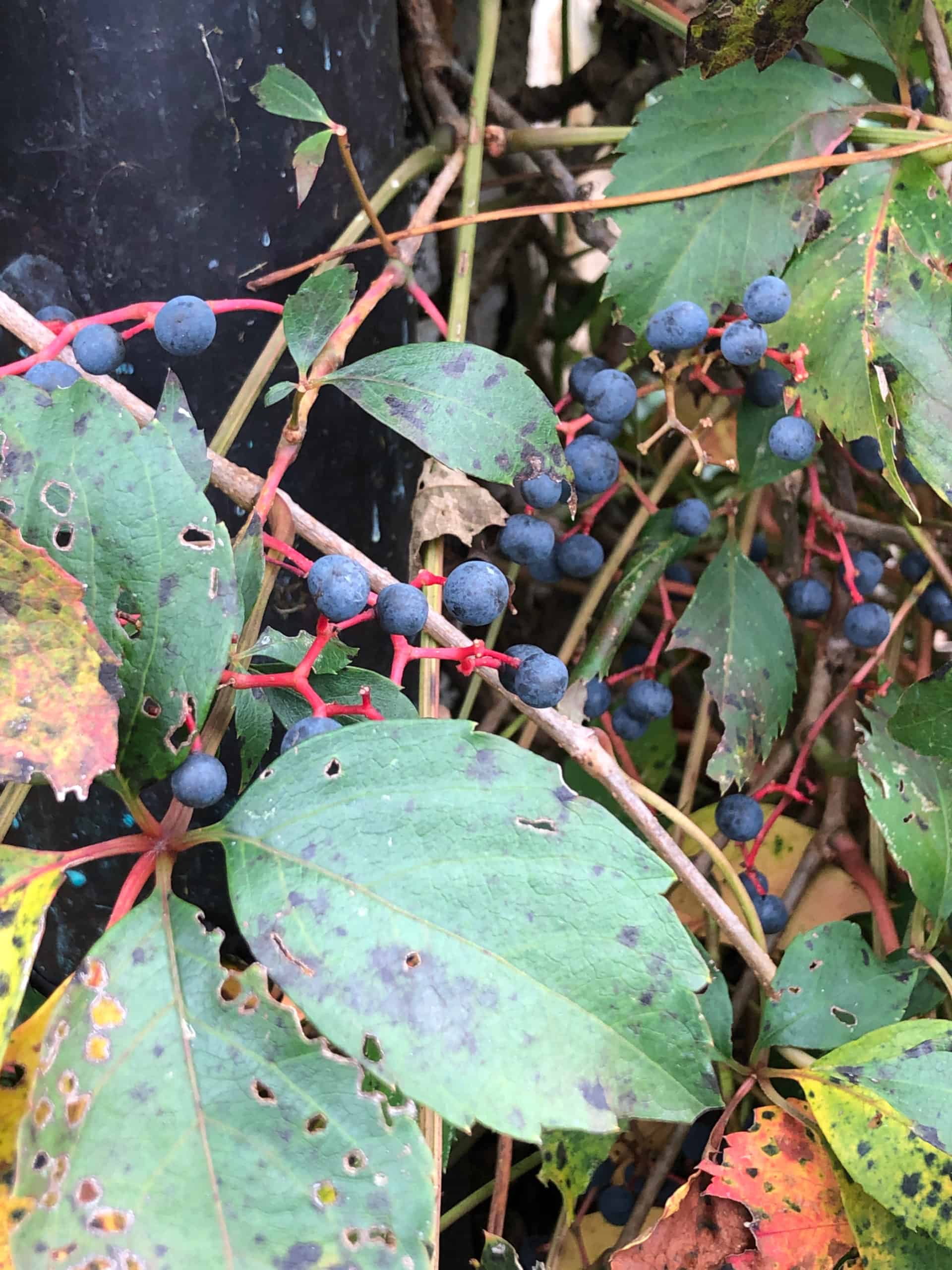
Photo: Daniel Barringer
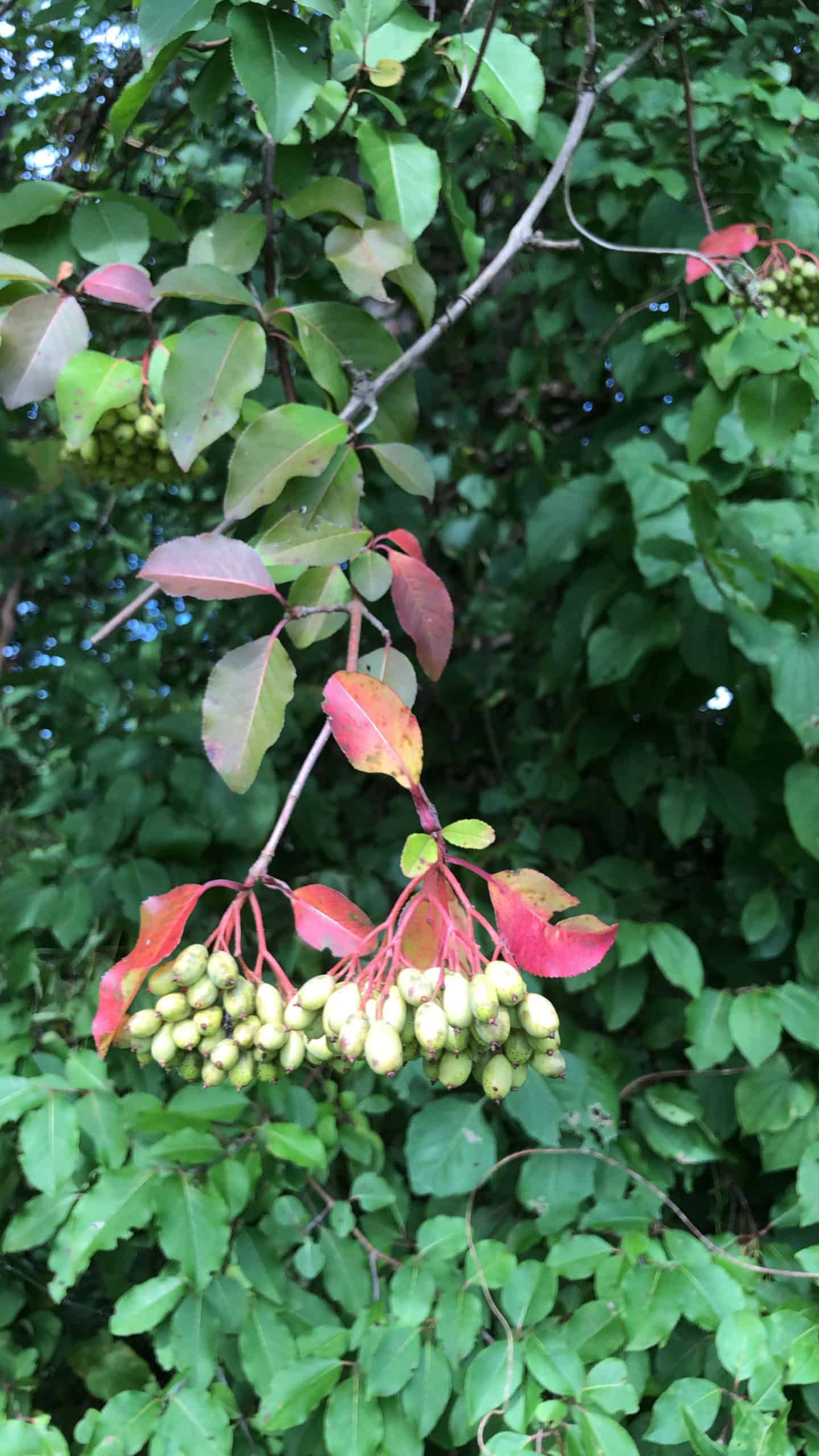
Photo: Daniel Barringer
Black haw viburnum (Viburnum prunifolium) offers two kinds of beauty in the seasons after flowering: late in the summer the fruit are a pale yellow-green set against leaves turning scarlet (above). A little later in the season the fruit have turned blue-black and the leaves burgundy with some scattered orange (below).
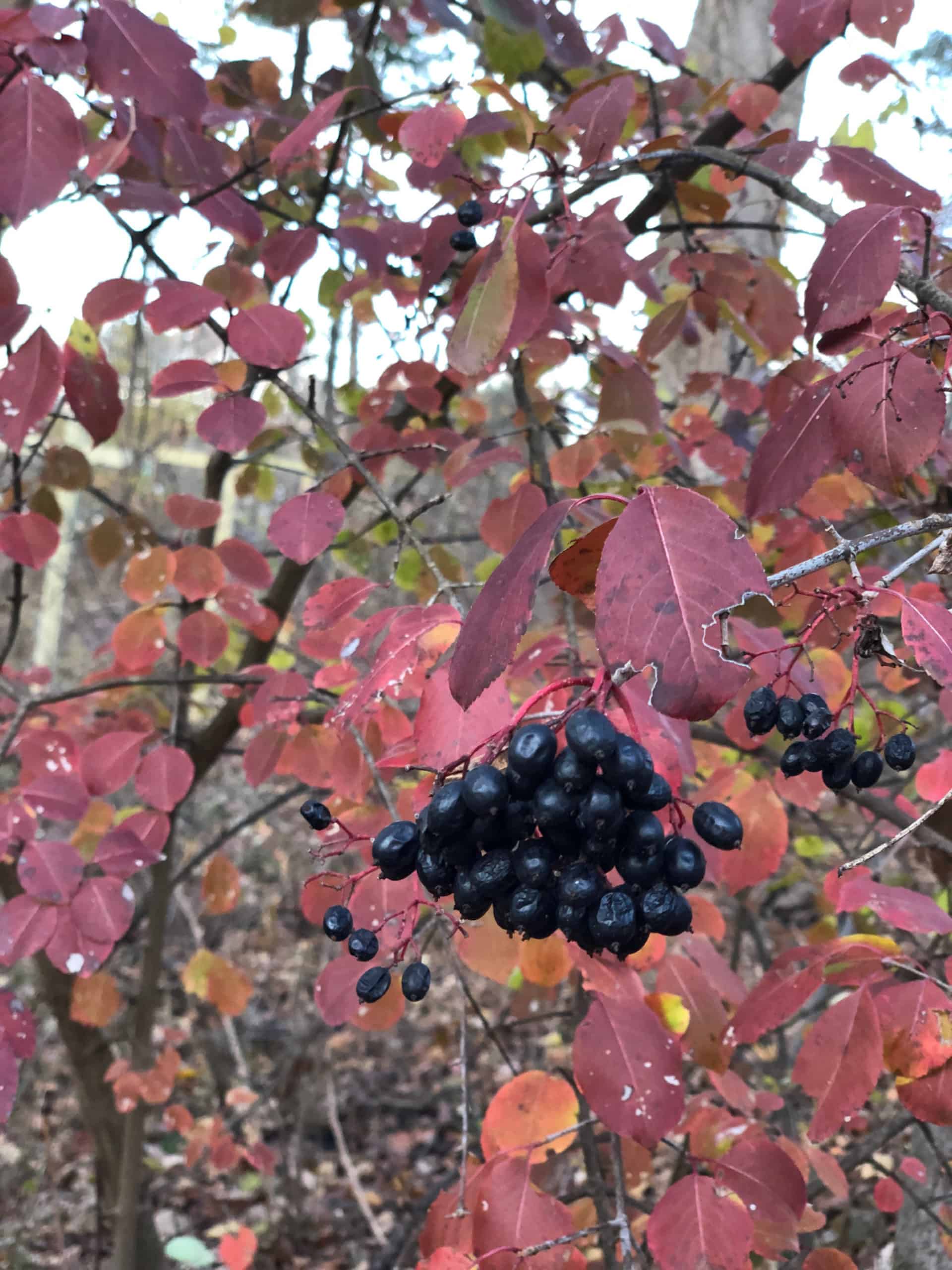
Photo: Daniel Barringer
Below, the waxy blue-gray fruit of Eastern red cedar (Juniperus virginiana) cluster on the branches of bright green needles.
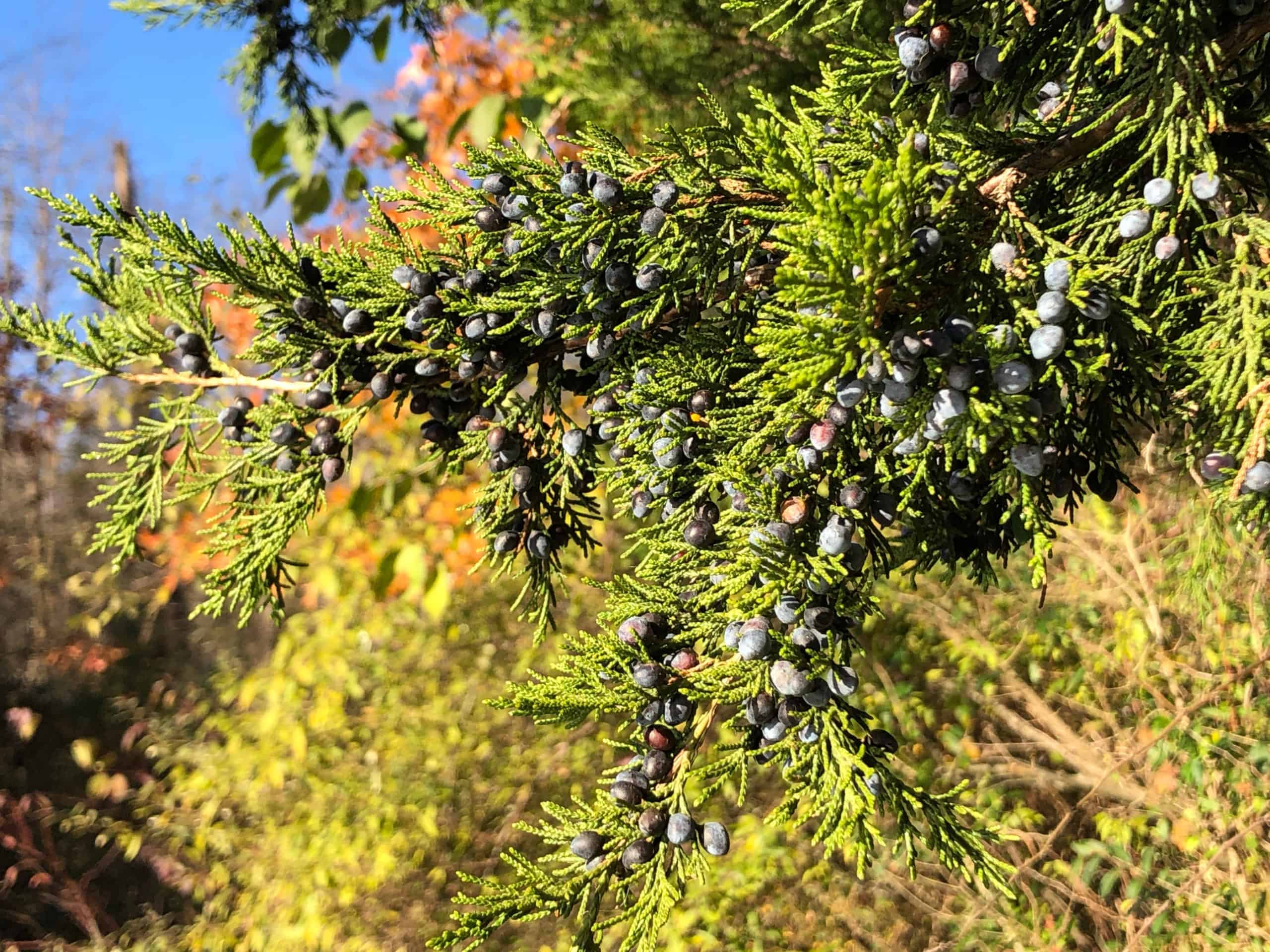
Photo: Daniel Barringer
Oops, one photo of wildflowers crept in here; it’s good to remember how lush this landscape can be. Pink clusters of Joe-Pye weed flowers (Eutrochium purpureum) burst to great height above goldenrod (Solidego canadensis), and New York ironweed (Vernonia noveboracensis) with the creamy flowers of sweet autumn clematis (Clematis virginiana) draped in the background.

Photo: Daniel Barringer
The blue-black fruit of black gum (Nyssa sylvatica) appear before the leaves turn bright burgundy, one of the first trees to show brilliant fall color.

Photo: Daniel Barringer
And here’s a fruit you don’t see that often: Although sassafras (Sassafras albidinum) is common here, the trees are dioecious with male and female flowers on separate trees, and the females which bear these fruit are either less common, or the fruit quickly eaten by birds. The shiny blue fruit is borne on these ridiculous red Dr. Seussian peduncles; it’s a treat to see them.
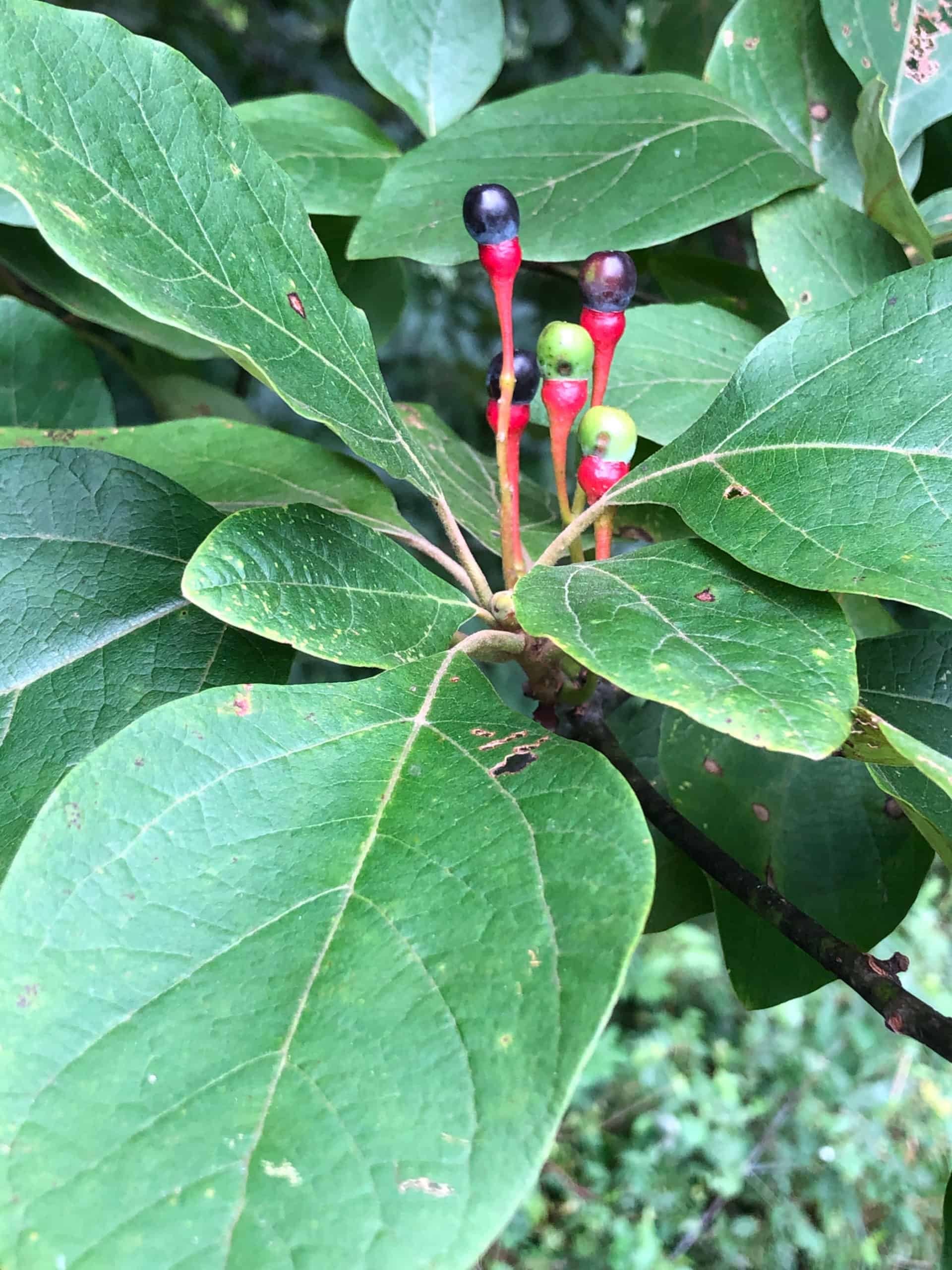
Photo: Daniel Barringer
Like all the seasons, the autumn of fruit passes quickly. Birds consume many of the fruit, nourishing them for long journeys or long winters. Already we are leaning toward the sun and the season of bounty will return soon.
